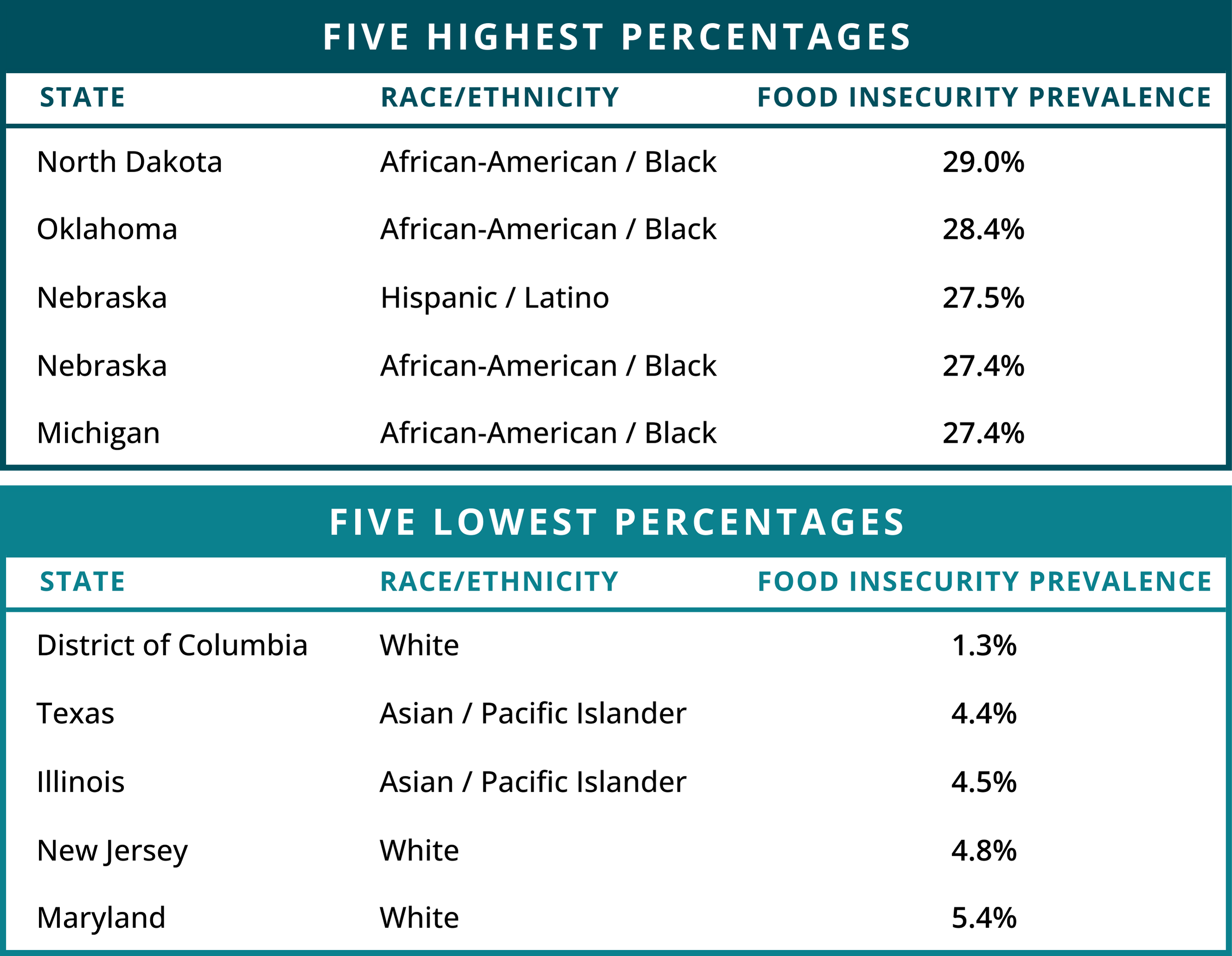Percent of households experiencing food insecurity
Measure Overview
Access to food, nutritious and varied, is considered a social determinant of health. Research has shown that food insecurity, aka having limited or unstable access to food, is linked to poorer health outcomes, higher chronic disease prevalence, and overall financial hardship. This measure is defined as, "Percentage of households that have experienced food insecurity (i.e. low or very low food security)."
A food insecure household, as defined by the USDA Economic Research Service, is one that, at times during the year, was “uncertain of having or unable to acquire enough food to meet the needs of all their members because they had insufficient money or other resources for food.” Further, a household is designated as ‘low food security’ by the USDA if they reported reduced quality, variety, or desirability of diet with little or no indication of reduced food intake; the USDA designates a household as ‘very low food security’ if they reported multiple indications of disrupted eating patterns and reduced food intake. The estimates on State Health Compare represent the percentage of households that have experienced food insecurity (i.e. low or very low food security).
Generate customized graphics using this data by selecting one of the options below.
Related Products

Food Insecurity in America: New Social Determinants State Health Compare Measure Tracks Percent of Households Experiencing Food Insecurity
Newly added to SHADAC’s State Health Compare tool, our ‘Food Insecurity’ measure provides state-level estimates of the prevalence of household-level food insecurity by state and by a number of breakdowns. In this post, we will review a food insecurity definition, the details of SHADAC’s food insecurity measure, and some food insecurity statistics & data highlights from that measure.
